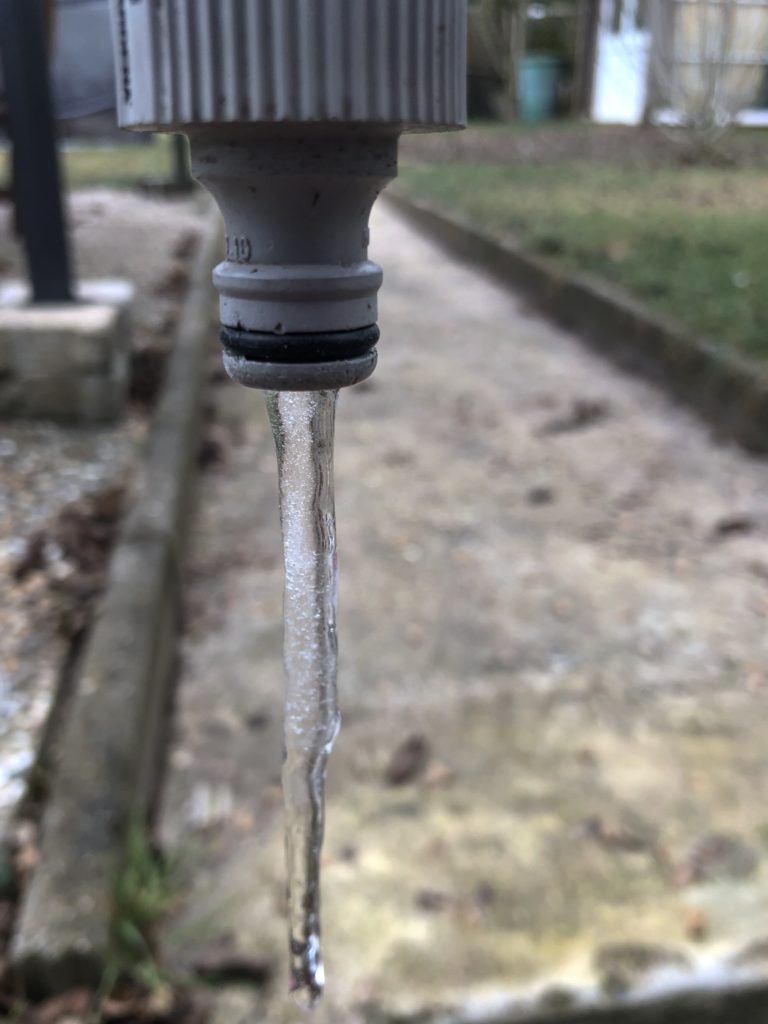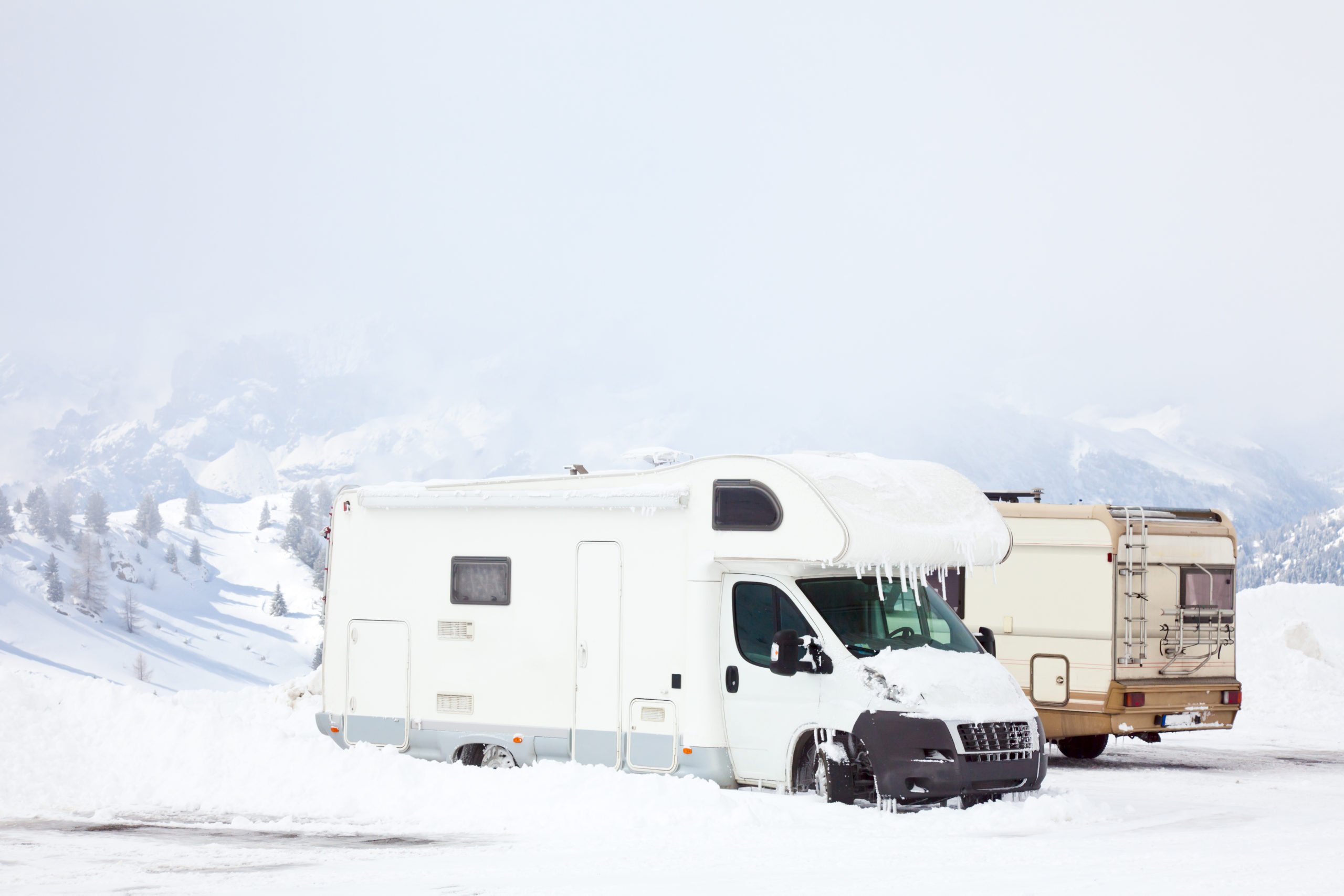Ensuring that your RV is running optimally and the engine remains healthy includes replenishing its antifreeze whenever necessary.
This may, however, leave some to wonder, can you put regular antifreeze in an RV?
You can’t put regular antifreeze in an RV because it is highly toxic and is, therefore, dangerous when used to prevent your RV’s plumbing lines from freezing. Non-toxic alternative compounds to antifreeze are available, which are safe to use in your RV’s plumbing system when winterizing.
In this article, we will go over the way in which antifreeze works in conjunction with your vehicle’s engine.
We will also discuss the difference between RV antifreeze and regular antifreeze.
Lastly, if you’re a first-timer, we will provide you with an easy-to-follow, step-by-step instructional guide on how to drain and refill your engine’s antifreeze.
How Does Antifreeze Work?

Most vehicle owners are familiar with the term antifreeze and acknowledge its necessity, but many individuals may still be unsure exactly how it works.
In order to answer the question of whether or not you can put regular antifreeze in an RV, it is first necessary to take a brief look at what antifreeze is and how it functions.
As the name would imply, antifreeze is a liquid solution that aids in the prevention of freezing.
This is important for cold climates and regions, which experience below-freezing temperatures throughout the year.
In order to cool a combustion engine and prevent overheating, water is commonly used.
The problem with this is that water has a relatively high freezing point (32° Fahrenheit / 0° Celsius).
Therefore, if your vehicle is operating in subfreezing temperatures, the engine is likely to freeze up, causing expansion and damage.
So this is where antifreeze comes in.
Antifreeze is a chemical solution that, when mixed with water, effectively lowers its freezing point, allowing the engine’s temperature-regulating systems to remain functioning in excessively cold and frigid temperatures.
Anti-Boiling Properties
In addition to antifreeze’s ability to lower water’s freezing point, it also has the capacity to increase its boiling point.
This widens the range of water’s usefulness in engines at both ends of the temperature spectrum, making antifreeze an extremely versatile compound.
Alternative Purposes for Antifreeze
Antifreeze has many practical uses and applications aside from its utility for cooling combustion engines. Some of its other common uses include:
- Heating and refrigeration
- Regulating the temperature of industrial machinery
- Cooling computers which use water, as opposed to air
What Is the Difference Between RV Antifreeze and Regular Antifreeze?
While RV antifreeze and regular antifreeze are identical in the way they function and react with water—depressing its freezing point while simultaneously increasing its boiling point—the main difference between the two lies in their toxicity.
During the winter months, RVs must be properly stored away while not in use.
The main problem to solve in regards to winterizing your RV for storage is how to prevent the plumbing lines from becoming frozen, expanded, and destroyed as a result of exposure to freezing temperatures.
Antifreeze solves this problem by, as previously explained, allowing the water in the lines to remain in a liquid state all winter long.
The reason why regular antifreeze is not to be used for preserving the plumbing lines in your RV is that regular antifreeze is derived from the chemical ethylene glycol.
Ethylene glycol is a toxic compound, which is also flammable. For this reason, it is not something you want to come into contact with your sink, shower, or toilet.
The good news is, alternative, non-toxic forms of antifreeze exist, which will accomplish this job in a sure and safe manner.
Non-toxic antifreeze is created with the chemical propylene glycol, which is fine to be used for winterizing your RV’s plumbing system and will not harm you upon contact.
No products found.
How to Add and Refill Antifreeze
Refilling your antifreeze is a relatively easy process, but if you have never done it yourself, it can appear to be confusing at first.
Failure to put the antifreeze in the correct location can lead to your engine becoming damaged—so before beginning, it is important to understand what you are doing and never attempt to guess or assume where it goes.
The first step to refilling your antifreeze is, of course, determining if your vehicle does, in fact, actually require it.
Most newer vehicles will conveniently feature a dash-light indicator, which will inform you that your antifreeze levels are low.
Another sign of low antifreeze levels will be indicated by your vehicle’s temperature gauge.
If you notice that the temperature gauge is abnormally hot, this is likely a sign that your engine is in need of some antifreeze.
The third and most reliable way to determine if your vehicle requires antifreeze is by checking the coolant reservoir located under the hood.
Most coolant reservoirs have two lines, one which shows the minimum level and another the maximum.
If you observe that the fluid line is below that of the minimum requirement, take the following steps in order to refill it.
Steps to Refilling Your Antifreeze
Once you have established that your vehicle requires additional antifreeze, the following steps should be followed in order to replenish it.
- Lift the vehicle’s hood, and identify where the coolant will be poured. This should appear as a removable, semi translucent jug, with a twist-on black cap. If you are still unsure where this is, consult your owner’s manual before proceeding.
- Open the cap of the coolant reservoir, insert a funnel to prevent spillage, and begin pouring the antifreeze slowly.
- Fill up to, but do not exceed the maximum line displayed on the side of the reservoir.
Draining the Coolant
Sometimes your vehicle may require complete draining of the coolant system. In order to do this:
- Turn off the vehicle first, and wait until the engine has completely cooled down.
- Next, carefully open and remove the radiator cap.
- Lastly, open up the drain valve, and allow the old antifreeze to flow out into an oil pan.
Once you have successfully drained the entirety of the coolant from your vehicle’s engine, replace the radiator cap, tighten the drain valve, and begin applying the three steps listed above.
Where to Buy Antifreeze
When purchasing antifreeze for the purpose of using it in an RV, it is important to read the product description to determine that it is non-toxic.
Never attempt to cheap out and purchase low-quality or incorrect antifreeze, as this can potentially cost you more in the long run.
For a quality non-toxic antifreeze, which you can trust to protect your RV as well as your health, Starbrite Sea Safe is a highly recommended option.
No products found.
Conclusion
In this article, we sought to answer the question of whether or not it was acceptable to put regular antifreeze in an RV.
The answer is no, it is never advisable to use regular antifreeze in your RV.
The reason why regular antifreeze is undesirable for RVs is that it is based on the chemical ethylene glycol, which is highly dangerous when it contacts your body; and as such, you do not want it in your plumbing lines, where it can be passed through your shower, toilet, or sink.
Regular antifreeze may also corrode and wear out the plumbing lines in your RV due to its harshness.
When winterizing your RV, always use a non-toxic, propylene glycol-based antifreeze solution.






